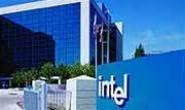
The divergent performances of the two chip giants came during a year when global semiconductor industry revenue rose by 9.3 per cent to reach US$260bn, up from US$237bn in 2005.
"2006 was the worst of times for Intel as its global semiconductor revenue dropped by 11.1 per cent from 2005," said Dale Ford, vice president for market intelligence at iSuppli.
"The revenue decline, due to Intel's bleak performance in its core PC microprocessor and Flash memory businesses, erased nearly all the company's sales gains from its strong year in 2005.
"Intel's 2006 revenue of $31.5bn was less than half a percentage point higher than its sales in 2004.
"For AMD, 2006 was the best of times as it achieved a whopping 91.6 per cent increase in revenue for the year, partly due to a major acquisition, but also because of strong gains in microprocessor market share."
ISuppli noted that AMD's "robust" increase in revenue helped the firm to rise to eighth place in 2006, up seven positions from 2005.
The study reported that Intel faced "hard times" in its microprocessor and Flash memory businesses in 2006, which together accounted for 83 per cent of total company revenue last year.
Intel's combined microprocessor and Flash revenue in 2006 fell to its lowest level since 2003 as the chip firm faced rising competitive pressure in these markets.
Meanwhile, AMD gained PC microprocessor market share in 2006 at Intel's expense. AMD's PC microprocessor revenue rose by 35.5 per cent in 2006 and its market share in that product segment increased to 16.1 per cent, up five percentage points from 2005.
AMD's revenue was boosted by its acquisition of graphics chip seller ATI Technologies in 2006.

_(20).jpg&h=140&w=231&c=1&s=0)


.png&h=140&w=231&c=1&s=0)





 iTnews Executive Retreat - Security Leaders Edition
iTnews Executive Retreat - Security Leaders Edition











_(1).jpg&h=140&w=231&c=1&s=0)



